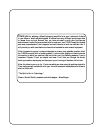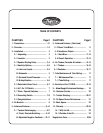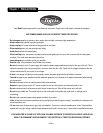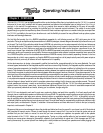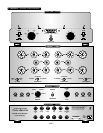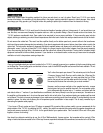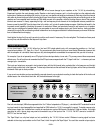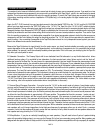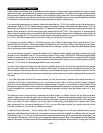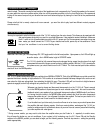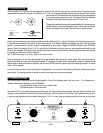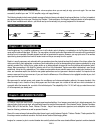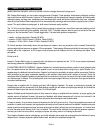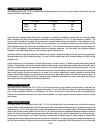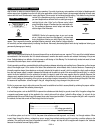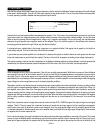
PAGE 6
Passive vertical bi-amplification does not require an electronic crossover. It simply means having two amplifiers of equal or unequal
power drive the high - and low frequency drive units of your loudspeakers separately. This is different from using monoblocks where
each one-channel amplifier drives only one speaker, or from horizontal bi-amping, where one 2-channel amplifier per speaker drives
the high and low frequency inputs with one channel each. In a vertical bi-amplification set-up, the more powerful amplifier is dedicated
to the speaker’s bass drivers because they require higher power than the tweeter / midrange units.
If you have a basic stereo power amp of equal or higher power output than the TIGRIS, that amplifier can drive the woofer inputs of
your speakers, while the TIGRIS’ speaker outputs connect to your speaker’s tweeter / midrange terminals. Because the TIGRIS is
phase-inverting, the signal fed to the second amplifier is 180 degrees out-of-phase. If the second amp is a phase-correct design, the
speaker leads connected to it must be inverted just like the speaker leads on the TIGRIS. If the second amp is a phase-inverting
design, hook up the speaker leads in normal fashion, hot-to-hot, ground-to-ground. To account for the difference in power output and
input sensitivity between the TIGRIS power amp section and your second power amplifier, you now use the Level Set attentuator on
the TIGRIS Rear Bay to equalize their power outputs. Take your time and do this accurately!
If for example, your second amplifier is a 150 Watt per channel amp, its output is approximately 5 times higher than the TIGRIS
depending also on the Pentode / Triode configuration and Feedback level you have chosen. Without adjusting the Level Set attenu-
ator, your speaker’s woofers will play in excess of 6dB louder than the midrange / tweeters - not what the speaker designer labored
over or the recording engineer worked for.
To insure flat frequency response, it is easiest to playback a test CD with prerecorded signals of decreasing frequency but steady
amplitude, such as Stereophile’s Test CD. You may order this particular CD by calling 1-800-358-6274. While the tone signals slowly
traverse the frequency range from high to low like a musical scale, your speaker’s tweeter will hand over playback to the midrange
and then to the bass driver. Your job will be to determine whether all test tones will be equally loud at your listening position, especially
where the TIGRIS hands over playback responsibilities to your bass amplifier.
To make sure you recognize the frequency window where the amplifiers hand over, turn off the second amp while the test tones play
back and make a mental note at which tone the apparent volume begins to drop and at which note playback stops entirely. The
window is between these two spots. Now turn on the second amp and repeat the playback of the entire scale. Adjust the Level Set
control if necessary. Even though your ears alone are a good judge, a more precise way to check for linearity would be to use a sound
level meter.
If you notice irregularities outside of this frequency window, you have less-than-linear speakers, room-induced anomalies or a
combination of both. Room-induced aberrations, such as boominess of certain notes or a suck-out of others (a region of apparent
signal loss,) can be addressed with room treatments, speaker placement, equalizers or a combination of these variables. Room
treatments are objects that either reflect or absorb sound waves at predetermined frequencies to counteract how the room responds
to what the speakers are reproducing. Sometimes repositioning the speakers by merely inches can address most or all of such
problems.
Thus before you invest in room treatments, experiment with speaker location, i.e. distance from the rear wall, distance between
speakers, distance from the listening seat, toe-in and tilt-back angle and, on stand-mounted speakers, speaker height. If you have
reason to believe that your room or speaker location is less than satisfactory, and you fail to resolve the problem to your satisfaction,
consult your retailer for advice. Whenever you bi-amp, make sure the bridging straps between your speaker’s dual binding
posts are removed! You risk seriously damaging the TIGRIS and your other power amplifier if you leave the two hot and the
two ground terminals on the rear of your speakers connected !
E: Basic Multi Room Connection - A fourth hook-up option for the Preamp Output is in a multi-room installation where a second
power amp, rather than driving a section of your main speakers, powers a second pair of speakers in a different room. Now the Level
Set attenuator of the TIGRIS is used to adjust the relative output level between rooms. Should you wish to mute the speakers in the
main room while the secondary room remains active, engage the Headphone selector. When muting speakers with the Headphone
switch in this scenario, it is best to operate with the lowest possible setting of the Master Volume control by turning up the Level Set
3-4 HOOK-UP OPTIONS: ( Continued )



